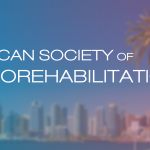SfN Annual Conference
APDM in Attendance at the Society for Neuroscience Annual Conference
San Diego, California
Nov 3-7
Booth # 136
APDM Wearable Technologies is focused on quantifying human movement with wearable sensors to aid in the assessment of neurodegenerative diseases and neurological disorders, helping translate advances in clinical research to meaningful patient outcomes. Deployed by thousands of researchers and clinicians worldwide, our proprietary Opal wearable sensors and sophisticated algorithms streamline data collection for tracking rehabilitation progress and assessing intervention response. APDM’s solutions can be used to track movement data in populations recovering from a stroke or a CNS injury and can help determine the impact of neuromodulation in individuals with movement disorders such as ataxia or cerebral palsy.
The Society for Neuroscience (SfN) is committed to advancing the understanding of the brain and the nervous system by bringing together scientists of diverse backgrounds, by facilitating the integration of research directed at all levels of biological organization, and by encouraging translational research and the application of new scientific knowledge to develop improved disease treatments and cures. Guided by this mission, the vision of the SfN is to advance breakthrough discoveries in neuroscience and promote innovative translation of scientific advances to improve the health of people everywhere.
POSTER SESSIONS
Saturday, Nov 3
051.02. Freezing of gait in challenging activities: Analysis of freezing during backward gait whilst playing tennis Bergmans
062.01. Cognitively challenging exercise is beneficial on executive function in Parkinson’s disease Jung
062.02. Cortical correlates of dual-task turning with and without freezing of gait Mancini
062.04. Role of sex on cholinergic activity on attention and gait in Parkinson’s disease Martini
062.05. Good vibrations: Cortical activity response to tactile cues in Parkinson’s freezers and non-freezers Stuart
062.06. Cognitive function in people with and without freezing of gait in Parkinson’s disease Morris
Sunday, Nov 4
246.01. Real time streaming and closed loop co-adaptive interface to steer multi-layered nervous systems performance Kalampratsidou
Tuesday, Nov 6
458.12. Infant leg movement activity intensity prior and post sleep throughout a week Trujillo-Priego
471.09. Objective measures of ataxic gait using wearable inertial sensors Sowalsky
CITED IN
2018, Iosa, et al. “Usefulness of Magnetoinertial Wearable Devices in Neurorehabilitation of Children with Cerebral Palsy.” Applied Bionics and Biomechanics.
2018, Lizama, et al. “A Novel Neuromodulation Technique for the Rehabilitation of Balance and Gait: A Case Study.“Journal of Clinical Neuroscience.
2018, Anidi, et al. “Neuromodulation Targets Pathological not Physiological Beta Bursts during Gait in Parkinson’s Disease.” Neurobiology of Disease.
2018, Gera, et al. “Inertial Sensor-Based Assessment of Central Sensory Integration for Balance After Mild Traumatic Brain Injury.” Military Medicine.
2018, Duclos, et al. “Using Inertial Signals to Characterize Main Lower Limb Gait Patterns in Individuals Post-stroke.” Annals of Physical and Rehabilitation Medicine.
2018, Watson, et al.“The Influence of Activity-dependent Stimulation on Gait Re-training in Chronic Stroke Survivors.” Annals of Physical and Rehabilitation Medicine.
Visit www.apdm.com/publications for additional citations.





